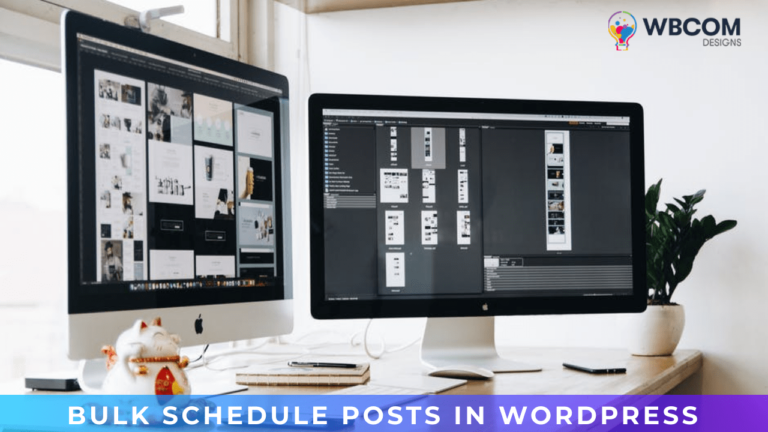As we march into the new year of 2023, the need for digital transformation in government organizations has never been more pressing. With the pandemic changing the way we work and learn, e-learning platforms have become essential for the growth and development of government industries. In the wake of this revolution, the question arises: which Learning Management System (LMS) best fits government organizations? With so many options on the market, choosing the right one can be overwhelming. Fear not, as we dive into the best government industry LMS in 2023, highlighting their features, benefits, and shortcomings to help you make an informed decision that will pave the way for a brighter future. So, are you ready to take your e-learning game to the next level? Let’s begin!
Table of Contents
ToggleKey Features to Look for in Government Industry LMS
To find the best LMS for a government organization, it is important to consider several key features that are essential to meet the unique needs of government agencies. Below are some of the core features that government organizations should look for when choosing an LMS:
- Security: Security is paramount for any government organization. It is important to choose an LMS that provides robust security measures to protect sensitive data and information. Look for an LMS that offers features such as secure login, encryption, and data backup and recovery.
- Accessibility: An LMS that is accessible to all users is important in a government organization. Look for an LMS that supports multiple languages, has features to support accessibility, and can be accessed on multiple devices, including desktops, laptops, and mobile devices.
- Customization: Government organizations may have unique training needs that require a customized LMS solution. Look for an LMS that allows for branding, user interface, and course design customization.
- Support: It is important to choose an LMS that offers reliable support to ensure the system runs smoothly at all times. Look for an LMS that offers comprehensive support, including technical support and training for administrators and users.
- Compliance: Compliance with regulations and standards is crucial for government organizations. Look for an LMS that complies with government regulations and standards, such as Section 508 and SCORM, to ensure that training is compliant and effective.
By considering these key features when evaluating LMS options, government organizations can find an LMS that meets their unique needs and ensures effective employee training.
Comparison of the Best Government Industry LMS Options
Several LMS options in the market are specifically tailored to meet the unique needs of government organizations. Here are some of the top LMS options for government agencies in 2023, along with a comparison of their features, benefits, and drawbacks:
LearnDash
LearnDash is an LMS that is gaining popularity among government organizations due to its flexibility, ease of use, and strong support for compliance. LearnDash offers a wide range of features, including creating customized courses and assessments, gamification, and support for multimedia content. Additionally, LearnDash provides robust reporting and analytics tools that enable administrators to track learner progress and identify areas for improvement.
One of the unique features of LearnDash is its ability to integrate with third-party applications and services, such as WordPress, PayPal, and Salesforce. This allows government organizations to easily incorporate their LMS into their existing technology infrastructure and streamline their training processes.
LearnDash also offers a high degree of customization, enabling government organizations to tailor their LMS to their specific needs and branding. Furthermore, the LearnMate LearnDash theme provides additional customization options, including pre-built templates, custom widgets, and drag-and-drop page building tools. This allows government organizations to create a unique and engaging learning experience for their employees.
In terms of compliance, LearnDash strongly supports Section 508 and WCAG 2.0 accessibility guidelines, ensuring that all learners can access the training materials. Additionally, LearnDash supports SCORM and Tin Can API standards, allowing government organizations to create and share compliant training content.
Blackboard Learn
Blackboard Learn is a widely-used LMS offering comprehensive features and tools to support online learning. It is a popular choice for government organizations due to its robust security features, compliance with accessibility standards, and customizable interface. However, the platform can be complex and may require additional support for administrators and users.
Canvas
Canvas is another popular LMS option for government organizations. It offers a user-friendly interface, a wide range of features, and strong support for accessibility and customization. Canvas is also known for its reliable customer support. However, some users have reported that the platform can load and navigate slowly.
Litmos
Litmos is an LMS designed specifically for corporate training and has gained popularity among government organizations. It offers a simple and intuitive interface, mobile compatibility, and strong support for customizations. It is also known for its powerful reporting and analytics tools. However, some users may find the limited support for complex compliance requirements a disadvantage.
Docebo
Docebo is an LMS that emphasizes social learning, gamification, and personalization. It offers a user-friendly interface, strong support for compliance, and integration with third-party applications. However, Docebo may not be the best option for organizations with complex or specific training requirements.
Absorb LMS
Absorb LMS is another popular LMS choice for government organizations. It offers a customizable interface, strong support for mobile learning, and robust reporting tools. It also has a reputation for strong customer support. However, some users have reported that the platform can be difficult to navigate and configure.
Overall, each LMS option offers its own set of features and benefits, and the best option for a government organization will depend on its unique needs and requirements. By evaluating each LMS based on the criteria established in section II, government organizations can make an informed decision when choosing an LMS that is right for them.
Best Practices for Implementing an LMS in a Government Organization
Implementing an LMS in a government organization can be a complex process that requires careful planning and execution. Here are some key considerations and best practices to keep in mind:
- Needs Assessment: Before implementing an LMS, it is important to conduct a needs assessment to identify the organization’s specific training requirements and goals. This will help to ensure that the LMS selected meets the organization’s needs and objectives.
- Stakeholder Buy-in: Getting buy-in from key stakeholders, including senior management and frontline staff, is crucial for implementing an LMS. This can be achieved by clearly communicating the benefits of the LMS and involving stakeholders in the decision-making process.
- Onboarding and Training: Effective onboarding and training are critical to successfully adopting an LMS. This includes providing comprehensive training for administrators and users, developing user-friendly documentation and resources, and creating a support system to address questions and concerns.
- Customization: Customizing the LMS to meet the government organization’s specific needs and branding can help increase engagement and adoption. This can include customizing the interface, adding company branding, and tailoring content to the organization’s training needs.
- Data Security and Compliance: Government organizations must ensure data security and compliance with relevant regulations and standards. This includes protecting sensitive information, complying with accessibility standards, and ensuring that the LMS is compatible with relevant compliance standards, such as SCORM and Tin Can API.
- Evaluation and Continuous Improvement: Continuous evaluation and improvement of the LMS can help ensure that it meets the organization’s evolving needs and objectives. This can be achieved by regularly gathering user feedback, conducting audits of training materials, and implementing improvements based on user feedback and data analysis.
In summary, implementing an LMS in a government organization requires careful planning, stakeholder buy-in, effective onboarding and training, customization, data security and compliance, and continuous evaluation and improvement. Government organizations can implement an LMS and improve training outcomes by following these best practices.
Wrapping Up Words
In conclusion, the government-industry is evolving rapidly, and so is the need for practical training and learning management systems. As we look ahead to 2023, it’s clear that LMS solutions will play a critical role in helping government agencies achieve their training goals. By considering accessibility, security, and user experience, agencies can choose an LMS to meet their unique needs and drive success. With the right LMS, government employees can stay up-to-date with the latest skills and knowledge, ultimately leading to better outcomes for citizens and communities.







